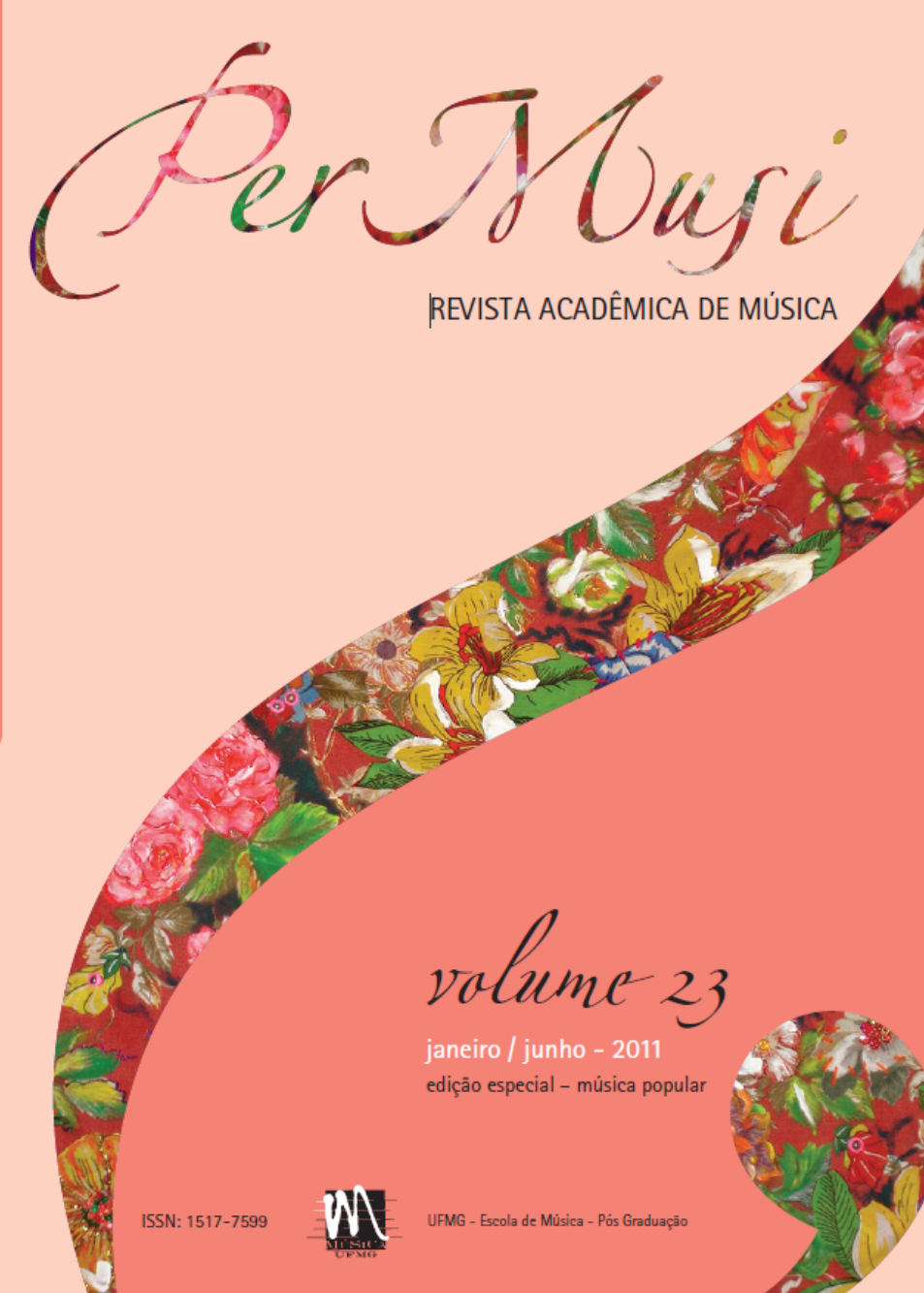Un aporte de Carlos Guastavino y Lima Quintana al mundo de la Nueva Canción argentina
Palabras clave:
Carlos Guastavino, Nuevo cancionero, Censura, Mercedes Sosa, Canción popularResumen
El artículo se refiere a la canción Hermano compuesta por el músico Carlos Guastavino sobre una poesía de Hamlet Lima Quintana. Dedicada al editor Rómulo Lagos, fue grabada por Mercedes Sosa en 1966. Aplicando la noción “mundos del arte” de Howard BECKER (1982), se interpreta la red de personas ligadas a la editorial Lagos como un tejido cooperativo que funcionó con eficacia hasta mediados de la década de 1970. Un esbozo del contexto posterior, signado por la censura, permite inferir algunos factores que incidieron en el quiebre de esa red de colaboraciones. Aunque respecto de Guastavino, se habla aquí de vinculación y no de pertenencia.
Referencias
ARETZ, Isabel. El folklore musical argentino. 3ª edición. Buenos Aires: Ricordi, 1970.
BECKER, Howard S. Los mundos del arte. Sociología del trabajo artístico. (Traducción de Joaquín Ibarburu). Bernal (provincia de Buenos Aires): Universidad Nacional de Quilmes, 2008. [Original: Art Worlds. Berkley: University of California Press, 1982].
BUCH, Esteban. The Bomarzo Affair. Ópera, perversión y dictadura. Buenos Aires: Adriana Hidalgo, 2003.
CARRASCO PIRARD, Eduardo. “Canción popular y política”, Rodrigo Torres (ed.) Música popular en América Latina. Santiago de Chile: IASPM-FONDART, 1999, p.62-70.
CORRADO, Omar. “Música culta y política en Argentina entre 1930 y 1945: una aproximación”, Música e Investigación 9. Buenos Aires: INM, 2001, p.13-33.
GARCÍA, María Inés. Tito Francia y la música en Mendoza, de la radio al Nuevo Cancionero. Buenos Aires: Gourmet Musical Ediciones, 2009.
GONZÁLEZ, Marcela. “Carlos Guastavino. La poesía del encuentro”, Ismos, arte y música nº 1, Oviedo (España): Vicerrectorado de estudiantes, 1999, p.71-86.
GUARANY, Horacio. Memorias del cantor. Casi una biografía. Buenos Aires: Sudamericana, 2002.
HUSEBY, Gerardo, “Presencia del modo frigio en la melódica criolla”, Revista Argentina de Musicología 3-4. Buenos Aires: AAM, 2002-2003, p.97-114.
INVERNIZZI, Hernán y Judith GOCIOL, Un golpe a los libros. Represión a la cultura durante la dictadura militar. Buenos Aires: Eudeba, 2003.
LIMA QUINTANA, Hamlet. Para no morir. Buenos Aires: Torres Agüero, 1986.
LIMA QUINTANA, Hamlet. Los referentes (Una historia de amistad), Buenos Aires: Torres Agüero, 1994.
MANSILLA, Silvina Luz. La obra musical de Carlos Guastavino. Circulación, recepción, mediaciones. Buenos Aires: Gourmet Musical Ediciones, 2010.
PLESCH, Melanie. “La música en la construcción de la identidad cultural argentina: el topos de la guitarra en la producción del primer nacionalismo”, Revista Argentina de Musicología 1. Córdoba (Argentina): AAM, 1996, p.57-68.
PORTORRICO, Emilio. Diccionario biográfico de la música argentina de raíz folklórica, 2ª edición. Buenos Aires: el autor, 2004.
PUJOL, Sergio. La década rebelde. Los años 60 en la Argentina. Buenos Aires: Emecé, 2002.
ROMERO, Luis Alberto. Breve historia contemporánea de la Argentina. 2ª edición. Buenos Aires: Fondo de Cultura Económica, 2001.
VILA, Pablo. “Música popular y auge del folklore en la década del ‘60”, Crear en la Cultura Nacional II: 10, Buenos Aires, sept-oct 1982, p.24-27.
Sitio electrónico
Sitio oficial de Mercedes Sosa: http://www.mercedessosa.com.ar. Último acceso: 10 de marzo de 2009.
Descargas
Publicado
Número
Sección
Licencia

Esta obra está bajo una licencia internacional Creative Commons Atribución 4.0.

Excepto cuando se indique lo contrario, el contenido de este sitio está sujeto a una Licencia Creative Commons - Atribuição 4.0 Internacional.












